Welcome to our comprehensive guide on Corydoras, the delightful armored catfish species that make wonderful additions to freshwater aquariums. One of the most common questions among aquarists is, “How big do Corydoras get?” In this article, we will explore the size variations of Corydoras and provide you with valuable insights on their tank size requirements.
Core Insights to Corydoras Growth Guide:
Understanding Cory Catfish: Armored Fish with Unique Features
Cory catfish, also known as armored catfish, possess fascinating characteristics that set them apart from other fish species. These small, peaceful freshwater fish have developed unique adaptations that help them thrive in their environment.
Scutes for Protection and Flexibility
One distinctive feature of cory catfish is their two rows of overlapping bony plates called scutes. These scutes act as a protective armor, shielding the catfish from potential threats and predators. The scutes not only provide vital defense but also allow for flexible movement, enabling the catfish to navigate through their surroundings with agility.
Venom Glands and Defensive Spines
While most species of corydoras catfish are harmless, some possess venom glands in their stiff spines. These venomous spines serve as a deterrent against predators, inflicting pain and swelling when pierced into an enemy. It is important to handle these catfish with care to avoid injury and potential discomfort.
It is worth noting that the majority of cory catfish species do not possess venomous spines and are safe to handle. However, it is always wise to research the specific species you intend to keep in your aquarium to ensure a safe and harmonious environment.
Air Breathers with a Unique Respiratory System
In addition to their unique physical features, cory catfish also possess a fascinating respiratory adaptation. They have the ability to breathe air and swallow it as a bubble, which they store in a specialized respiratory chamber. This allows them to supplement their oxygen intake when needed, particularly in oxygen-deprived or poorly ventilated conditions.
To release any excess air, cory catfish have a small opening called a spiracle near their tail. This release of air is essential for maintaining the appropriate balance of gases within their respiratory system.

Cory Catfish Size Variations and Species Diversity
When it comes to cory catfish, there is a wide range of sizes to consider. With over 150 different species of cory catfish, each has its own unique size and characteristics. The average size of a cory catfish ranges from 2 to 3 inches, making them a relatively small but fascinating addition to your aquarium.
However, it’s important to note that some cory catfish species can grow larger and reach up to 4 inches in length. This diversity in size provides aquarium enthusiasts with plenty of options when selecting the right corydoras for their tank.
To help you understand the size variations of common cory catfish species, here is a size chart showcasing the full-grown sizes of some popular species:
Size Chart: Common Cory Catfish Species and Full-Grown Sizes
| Cory Catfish Species | Full-Grown Size |
|---|---|
| Bronze Cory Catfish | 3 inches |
| Albino Cory Catfish | 3 inches |
| Black Cory Catfish | 2.2 inches |
| Sterba’s Cory Catfish | 2.5 inches |
| Peppered Cory Catfish | 2.3 inches |
Keep in mind that this size chart represents just a few of the many cory catfish species available. Always consult with a reputable source or expert to gather comprehensive information about the specific species you are interested in.
Understanding the size variations and species diversity of cory catfish empowers you to make informed decisions when selecting the right corydoras for your aquarium. Consider factors such as tank size, compatibility with other fish, and personal preferences to create a harmonious and visually appealing aquatic environment.
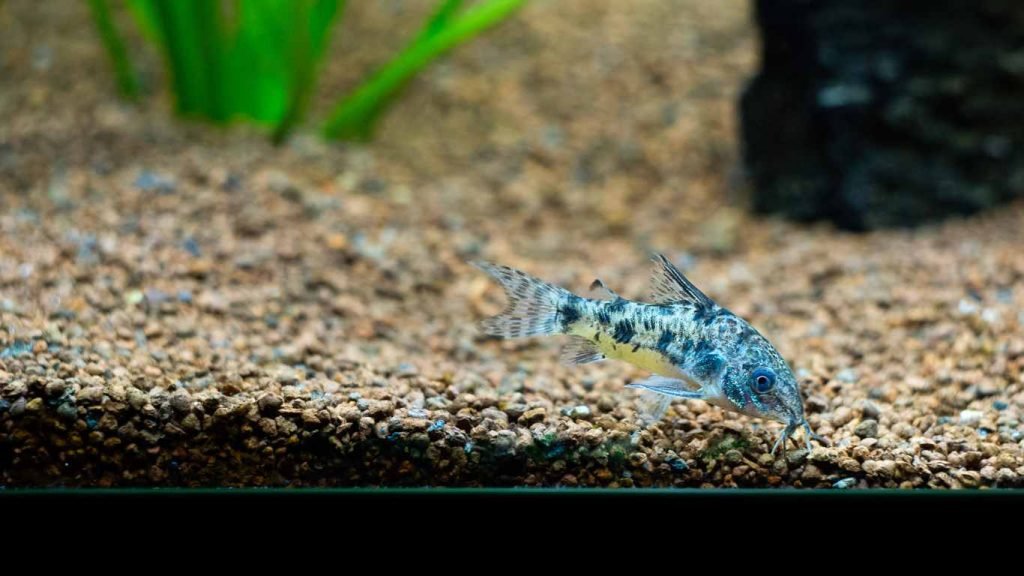
Tank Conditions for Cory Catfish: Temperature and pH
Creating the right tank conditions for your Cory catfish is crucial to their health and well-being. Paying attention to temperature and pH requirements will help ensure a thriving aquarium environment for these fascinating fish.
Temperature Requirements
Cory catfish are tropical fish and thrive in a temperature range of 21 to 28 degrees Celsius (70 to 82 degrees Fahrenheit). It’s important to keep the water temperature stable within this range to prevent stress and maintain optimal health for your catfish.
While most Cory catfish can adapt to a broad temperature range, some species have specific preferences. Research the particular species you are keeping to ensure you meet their specific temperature requirements in your aquarium setup.
pH Requirements
The pH tolerance of Cory catfish varies, but the majority of species can tolerate a range between 6.0 and 8.0. It is important to test and monitor the pH level of your aquarium regularly to ensure it remains within this optimal range for your catfish.
Maintaining the appropriate pH level is essential for the overall health and well-being of your Cory catfish. Fluctuations or extremes in pH can cause stress and harm to your fish and may lead to various health issues.
Tips for Temperature and pH Management
Here are some tips to help you maintain the proper temperature and pH in your Cory catfish tank:
- Use a reliable aquarium heater to maintain the desired temperature range.
- Equip your tank with a thermometer to monitor temperature fluctuations.
- Regularly test the pH level using an aquarium test kit.
- Make necessary adjustments to the pH level using suitable aquarium conditioners or buffers, following the manufacturer’s instructions.
- Keep an eye on the behavior and overall health of your catfish, as unusual changes may indicate temperature or pH-related issues.
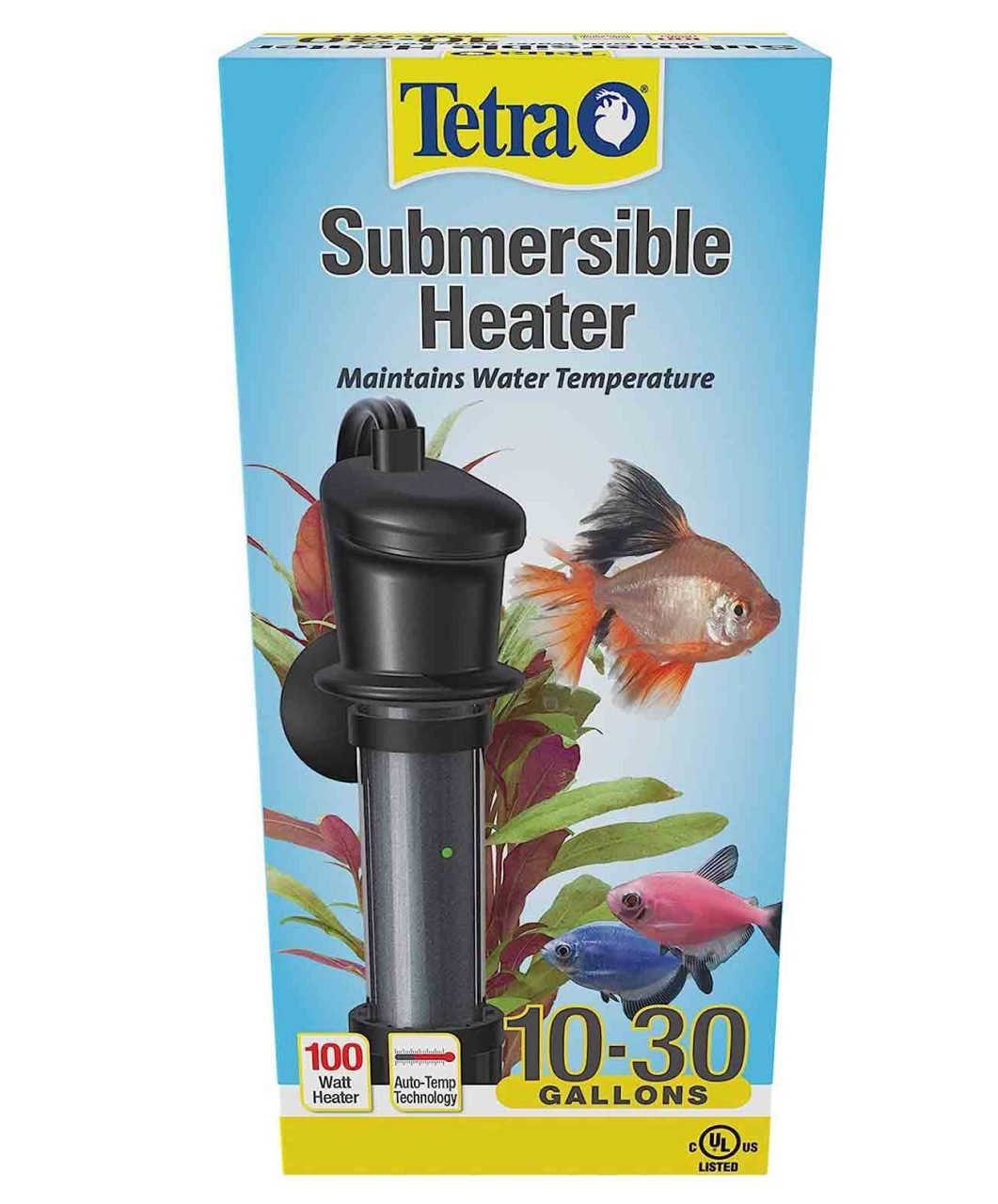
Submersible Aquarium Heater With Electronic Thermostat
Social Behavior of Cory Catfish: Shoaling and Spawning
Cory catfish are known for their social behavior, often swimming together in groups called shoals. They thrive when kept in groups of at least five individuals, as it provides them with a sense of security and comradery. In a home aquarium, it’s recommended to have a tank that is at least 60 centimeters (24 inches) long, allowing enough space for the cory catfish to swim and interact.
Shoaling is a natural behavior for cory catfish, and it serves several important purposes. Firstly, it helps them fend off predators by creating the impression of a larger organism, making it more difficult for predators to single out individual catfish. Secondly, it assists them in finding food. As they move together, they collectively search for and consume food particles from the substrate.

Another fascinating aspect of cory catfish behavior is their reproductive strategy. Cory catfish are egg-layers and engage in group spawning. Males participate in fertilizing the female’s eggs, which are then laid on rocks or plants at the bottom of the tank. Unlike some other fish species, cory catfish do not provide parental care for their eggs or fry once they are laid. The eggs hatch within a few days, and the fry are left to fend for themselves.
“Shoaling is a natural behavior for cory catfish, and it serves several important purposes.”
It’s important to note that while cory catfish are social and shoaling fish, their social behavior is primarily manifested in swimming together rather than engaging in social interactions with other fish species. They can coexist peacefully with a wide range of small to medium-sized peaceful fish, making them a great addition to many community aquariums.
Understanding the social behavior of cory catfish is essential for creating a thriving and harmonious aquarium environment. By providing them with ample space, suitable tankmates, and a secure shoaling group, you can ensure that your cory catfish are healthy, happy, and able to express their natural behaviors.
Continue reading to learn more about the specific diet requirements of cory catfish, as well as common diseases and health concerns you should be aware of.
Ideal Tank Conditions for Cory Catfish
| Aspect | Requirements |
|---|---|
| Water Temperature | 21-28°C (70-82°F) |
| pH Level | 6.0-8.0 |
| Tank Size | Minimum 60 centimeters (24 inches) in length |
| Group Size | At least five individuals |
| Tankmates | Small to medium-sized peaceful fish |
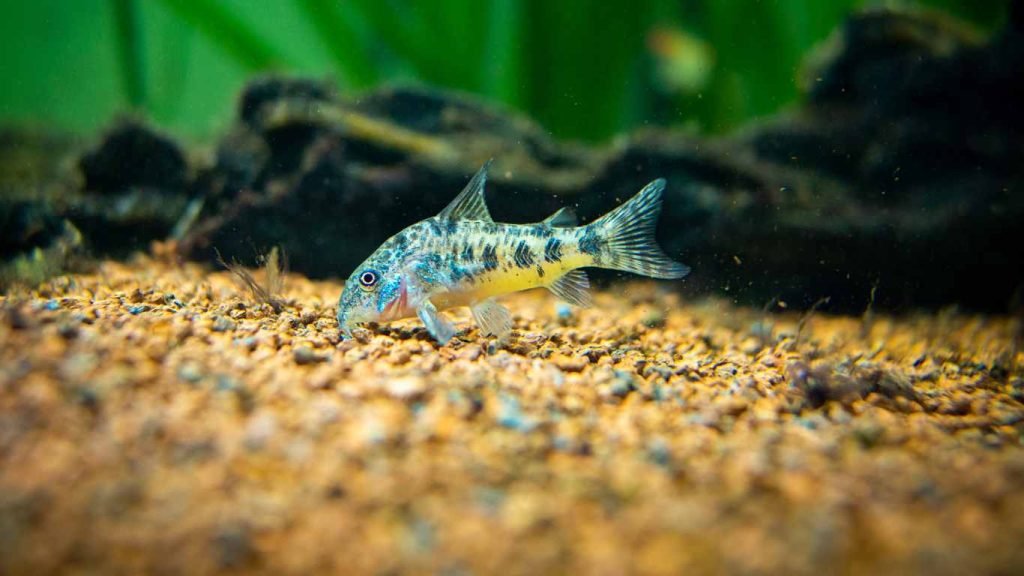
Cory Catfish Diet: Bottom Dwellers with a Unique Mouth Structure
When it comes to feeding, Cory catfish have a fascinating diet that reflects their bottom-dwelling nature and unique mouth structure. These armored catfish have a small mouth located on the underside of their head, perfectly suited for their feeding habits.
Their diet primarily consists of insects, worms, crustaceans, and plant matter. They have specialized mouthparts called barbels, which are fleshy whisker-like appendages surrounding their mouths. These barbels act as sensory organs, helping them locate food hidden within the substrate.
“Their barbels serve as an excellent tool for foraging,” says Dr. Emily Carter, a renowned ichthyologist. “They use these extensions to explore the substrate and sift through it in search of their preferred meal.”
Additionally, Cory catfish can be fed sinking pellets and algae wafers, which are designed to sink to the bottom of the tank, ensuring these bottom-dwelling fish have access to their food. Live foods like brine shrimp also make a nutritious addition to their diet, replicating their natural feeding behaviors.
It’s important to provide a balanced diet and ensure that they receive enough food, especially in community tanks where other fish may consume the food before it reaches the bottom. Keeping their unique mouth structure and feeding habits in mind, it’s crucial to offer a variety of food sources to cater to their specific dietary needs.
Common Diseases and Health Concerns for Cory Catfish
As much as we want our cory catfish to be healthy and happy in our aquariums, they can still be susceptible to certain diseases and health concerns. It’s important to be aware of these issues and take the necessary steps to prevent and treat them.
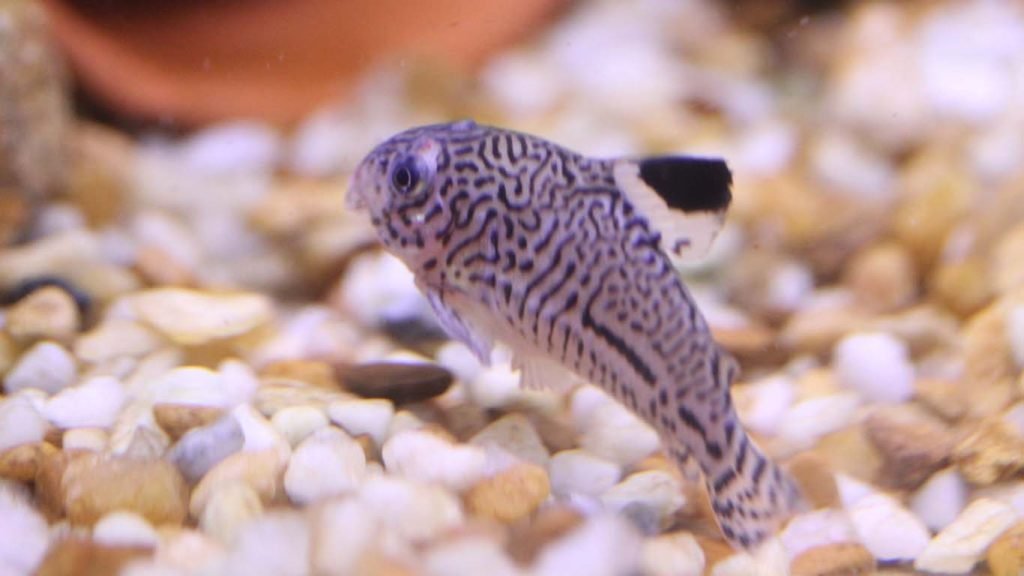
Corydoras Catfish Diseases
There are a few common diseases that can affect cory catfish, including:
- Ich: This disease is caused by a parasite and typically presents as tiny white specks on the fish’s skin. It’s important to recognize the signs of ich early and treat it promptly to prevent it from spreading to other fish in the tank.
- Red Spot Disease: This disease causes red sores on the skin of cory catfish. It can be caused by bacterial or fungal infections, and prompt treatment is necessary to prevent further complications.
- Fin Rot: Fin rot is a bacterial infection that damages the fins of cory catfish. Signs of fin rot include frayed or discolored fins. If left untreated, fin rot can lead to further health issues and even death.
- Nitrate Poisoning: High levels of nitrate in the tank can be toxic to cory catfish. Regular monitoring of water parameters and maintaining proper filtration and water changes can help prevent nitrate poisoning.
It’s crucial to observe your fish regularly for any signs of illness or unusual behavior. If you notice any symptoms of these diseases, it’s essential to take immediate action to prevent the condition from worsening.
Corydoras Health Concerns
In addition to specific diseases, there are some general health concerns to keep in mind when caring for cory catfish:
- Maintaining Water Quality: Poor water quality can lead to stress and various health issues for cory catfish. Regular water changes, proper filtration, and monitoring of water parameters such as temperature and pH are crucial for their well-being.
- Stress Management: Cory catfish can be sensitive to changes in their environment, leading to stress. It’s important to provide hiding spots, suitable tankmates, and a peaceful environment to minimize stress levels.
- Proper Feeding: A balanced diet is essential for the overall health of cory catfish. Ensure they receive a variety of high-quality foods and avoid overfeeding, as it can lead to obesity and other health complications.
Proper care, regular monitoring, and prompt treatment are key to preventing and managing corydoras catfish diseases and health concerns.
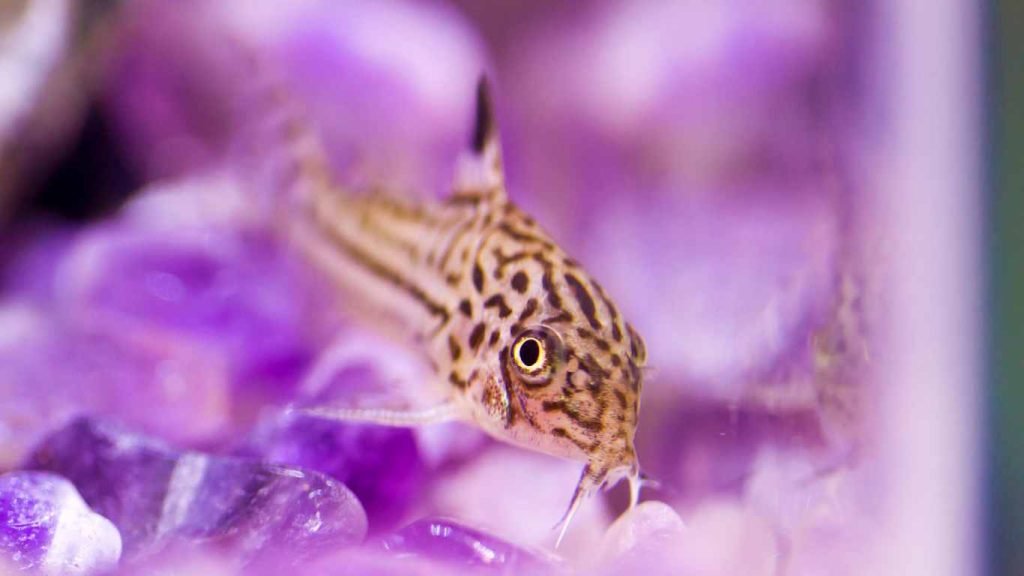
Popular Cory Catfish Species and Their Sizes
There are many popular cory catfish species, each with its own unique size. If you’re considering adding these delightful armored fish to your aquarium, it’s important to understand the size variations among different species. Here are some common cory catfish species and their adult sizes:
| Cory Catfish Species | Size (inches) |
|---|---|
| Bronze Cory Catfish | 3 |
| Albino Cory Catfish | 3 |
| Black Cory Catfish | 2.2 |
| Sterba’s Cory Catfish | 2.5 |
| Peppered Cory Catfish | 2.3 |
These sizes are approximate and may vary slightly. It’s essential to consider the adult size when planning your aquarium and selecting compatible tankmates. Remember, cory catfish are community fish and thrive in groups, so provide an appropriate tank size to accommodate their needs.
Cory catfish are beautiful additions to any aquarium, and their varied sizes and patterns add visual interest. Next, we’ll explore the proper care and tank maintenance required to keep these fascinating catfish thriving in your aquarium.
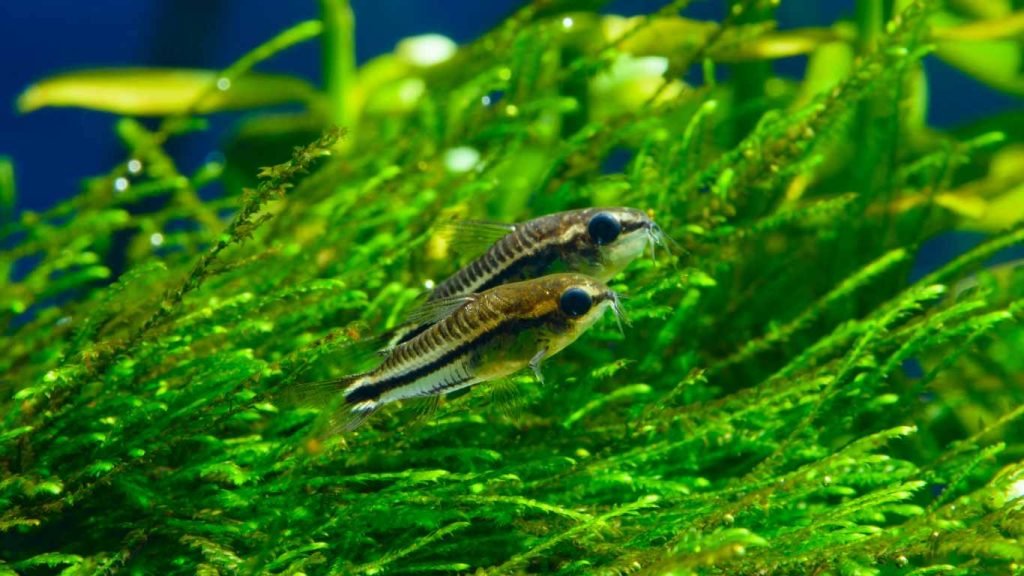
Guide to Keeping Cory Catfish: Tank Size and Compatible Tankmates
When keeping cory catfish, it’s essential to provide them with a suitable tank size and choose compatible tankmates. The size of the tank plays a crucial role in the well-being of these catfish, while the choice of tankmates ensures a harmonious and stress-free environment.
The ideal tank size for cory catfish is a minimum of 60 centimeters (24 inches) in length. This provides them with enough space to swim and explore their surroundings. Additionally, keeping cory catfish in groups is highly recommended. A group of at least five individuals will mimic their natural shoaling behavior, promoting their overall health and happiness.
When selecting tankmates for cory catfish, it’s important to choose small to medium-sized peaceful fish. Aggressive or larger fish may outcompete cory catfish for food or intimidate them, causing stress and potential health issues. Here are some suitable tankmates for cory catfish:
- Tetras
- Guppies
- Platies
- Dwarf Gouramis
- Rasboras
- Small Corydoras species
These tankmates generally coexist well with cory catfish, ensuring a peaceful and harmonious aquarium environment. Remember to provide enough hiding places and vegetation, as this will make the cory catfish feel secure and enable them to exhibit their natural behaviors.
With the right tank size and compatible tankmates, your cory catfish will thrive and display their charming and engaging behaviors. Enjoy observing their active shoaling and bottom-dwelling activities as they interact with their environment and tankmates.
The Benefits of Keeping Cory Catfish in Suitable Tank Size and With Compatible Tankmates
“Keeping cory catfish in an appropriate tank size and with compatible tankmates provides numerous benefits. It allows the catfish to engage in natural behaviors, reduces stress, and promotes their overall health and well-being.”
In a suitable tank size, cory catfish have ample space to explore, swim, and exhibit their natural behaviors. They will feel secure and comfortable, leading to reduced stress levels and better overall health. Keeping them in a group further enhances their well-being, as they mimic their natural shoaling behavior.
Choosing compatible tankmates ensures a peaceful coexistence within the aquarium. When compatible fish species share the same environment, there is less competition for resources such as food and territory. This promotes a harmonious and stress-free atmosphere for all inhabitants, including the cory catfish.
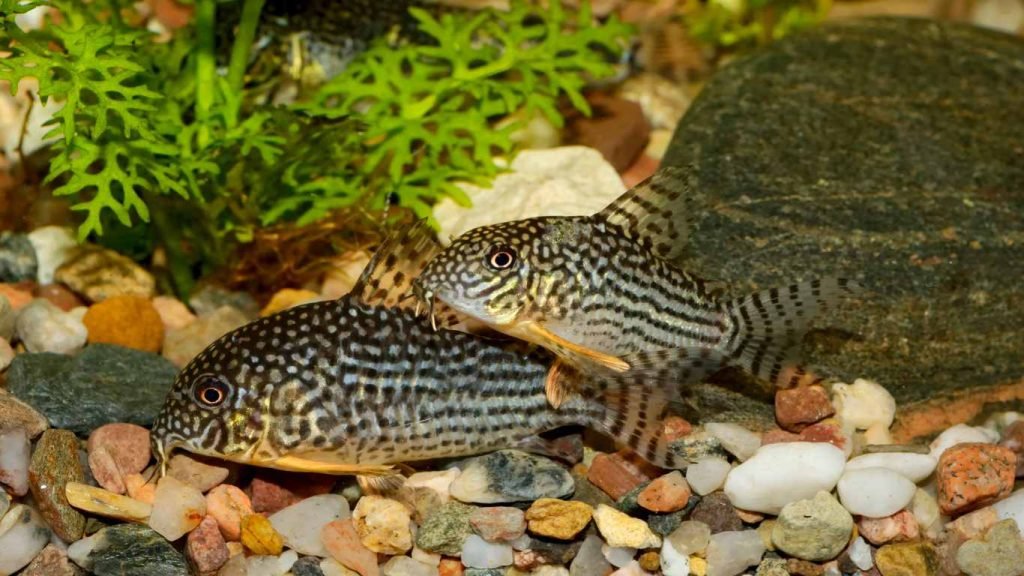
By creating an optimal habitat for cory catfish, you can enjoy watching their fascinating behaviors and vibrant interactions with their tankmates. Witness their playful antics and social dynamics as they navigate the aquarium, creating a captivating underwater display.
Ensure the well-being of your cory catfish by providing them with the right tank size and compatible tankmates. This will not only promote their overall health but also enhance your enjoyment of these delightful and charismatic catfish.
Suitable Tankmates for Cory Catfish
| Fish Species | Size | Temperament |
|---|---|---|
| Tetras | 1-2 inches | Peaceful |
| Guppies | 1-2 inches | Peaceful |
| Platies | 2-3 inches | Peaceful |
| Dwarf Gouramis | 2-3 inches | Peaceful |
| Rasboras | 1-2 inches | Peaceful |
| Small Corydoras species | 1-2 inches | Peaceful |
Table: Suitable tankmates for cory catfish.
Cory Catfish and Tank Maintenance: Cleaning and Feeding
While Cory catfish are known for their ability to scavenge food debris and help keep the tank clean, regular tank maintenance is still necessary to ensure their well-being. As bottom feeders, they rely on sinking foods for their nutrition. However, it’s important to ensure that they receive enough food, as other fish in the tank may consume it before it reaches the bottom.
To maintain a healthy tank environment for your Cory catfish, there are two key aspects to consider: cleaning and feeding.

Cleaning the Tank
To keep your Cory catfish thriving, regular tank cleaning is essential. Here are some steps you can follow:
- Perform partial water changes every week to maintain water quality. Aim to replace 25-30% of the water in the tank.
- Use a siphon or gravel vacuum to remove waste and debris from the substrate during water changes.
- Inspect and clean the filter regularly to remove any accumulated debris that could compromise its effectiveness.
- Remove any uneaten food or excess plant matter to prevent it from decaying and affecting water parameters.
Feeding the Cory Catfish
Proper feeding is crucial for the health and vitality of your Cory catfish. Here are some guidelines to ensure they receive adequate nutrition:
- Offer a varied diet that includes sinking pellets, algae wafers, and live or frozen foods like brine shrimp or bloodworms.
- Feed the Cory catfish once or twice a day, providing an amount they can consume within a few minutes. Avoid overfeeding, as it can lead to water quality issues.
- Observe the feeding behavior of your Cory catfish to ensure they are actively eating. If you notice any signs of decreased appetite, adjust the feeding regimen accordingly.
By maintaining regular tank cleaning practices and providing a balanced diet, you can create a conducive environment for the well-being of your Cory catfish. Remember to monitor their behavior, appearance, and overall health regularly, making adjustments to their care as needed. Keeping their tank clean and providing proper feeding will contribute to the long-term health and happiness of your Cory catfish.

Cory Catfish Species Selection for Aquarium Enthusiasts
When it comes to choosing a cory catfish species for your aquarium, the options are abundant. Each species has its own unique size, behavior, and pattern, offering a diverse range of choices to aquarium enthusiasts. To ensure a harmonious and thriving tank environment, careful consideration of tank size, compatibility with other fish, and specific characteristics of the corydoras species is essential.
First and foremost, it is crucial to research the size of the cory catfish species you are interested in. Some species stay small, reaching only a couple of inches in length, while others can grow larger, reaching up to four inches. Understanding the adult size of the species you choose will help you plan the appropriate tank size and provide adequate swimming space for your cory catfish.
Another important factor to consider is the compatibility of corydoras species with other fish in your aquarium. While cory catfish are generally peaceful and can coexist with a variety of fish, it’s important to choose tankmates that share similar temperaments and won’t outcompete the cory catfish for food. Additionally, take into account the temperature preferences and social behaviors of both the cory catfish species and the other fish in your tank to ensure a harmonious community.
To assist you in making an informed decision, here are some popular corydoras species that you can consider for your aquarium:
- Bronze Cory Catfish: Average Size – 3 inches
- Albino Cory Catfish: Average Size – 3 inches
- Black Cory Catfish: Average Size – 2.2 inches
- Sterba’s Cory Catfish: Average Size – 2.5 inches
- Peppered Cory Catfish: Average Size – 2.3 inches
Please note that the sizes mentioned above are average lengths and can vary depending on the individual fish’s genetics and health.
Remember, selecting the right cory catfish species requires thoughtful consideration of their size, tank compatibility, and other specific characteristics. By taking these factors into account, you can create a vibrant and balanced aquarium community that will bring joy and beauty to your home.

Join Our GeoZoo Family
Subscribe to our Newsletter
Final Remarks
Cory catfish are fascinating and popular freshwater aquarium fish. With their wide range of sizes, most species typically grow to be between 2 and 4 inches in length, making them suitable for various tank sizes. However, it is crucial to provide them with the right tank conditions, compatible tankmates, and a balanced diet to ensure their well-being and happiness.
To create a suitable environment for your cory catfish, maintain a tank with a minimum length of 24 inches and ensure that the temperature and pH levels align with their requirements. Additionally, keep their tank clean and provide regular feeding, taking into consideration their bottom-dwelling nature and unique mouth structure.
When choosing tankmates, opt for small to medium-sized peaceful fish that won’t outcompete the cory catfish for food. It is essential to continue monitoring their health and address any underlying issues promptly. Regular tank maintenance, including cleaning and substrate cleaning, is also necessary to create a thriving aquarium ecosystem.
By providing appropriate care, corydoras catfish can flourish and bring joy to your aquarium. Their unique features, social behavior, and ability to breed in groups add to their charm. So, if you’re looking to add a lively and engaging fish to your freshwater aquarium, consider the delightful cory catfish.
FAQ
How big do corydoras get?
Cory catfish range in size from 2.5 to 12 centimeters (less than an inch to about 4.75 inches) in total length. Most cory catfish are less than 7 centimeters (about 2.75 inches) in length.
What are the unique features of cory catfish?
Cory catfish have two rows of overlapping bony plates called scutes that protect them and allow for flexible swimming. Some species have venom glands in their stiff spines, which can cause pain and swelling when pierced into an enemy. They also have the ability to breathe air and swallow it as a bubble, releasing any excess air through an opening near their tail.
What is the size variation among cory catfish species?
There are over 150 different species of cory catfish, each varying in size. The average size of cory catfish is 2 to 3 inches, but some species can grow larger, reaching up to 4 inches in length. Refer to the size chart for more details on specific species.
What are the tank conditions preferred by cory catfish?
The temperature requirements for most cory catfish range from 21 to 28 degrees Celsius (70 to 82 degrees Fahrenheit), with specific species having preferences within that range. The pH tolerance of cory catfish varies, but most can tolerate a range between 6.0 and 8.0.
How do cory catfish behave in social settings?
Cory catfish are social fish that shoal or swim in groups. They do best in groups of at least five individuals, providing enough room for swimming in a tank that is at least 60 centimeters (24 inches) long. They also spawn in groups, with males fertilizing the female’s eggs. The eggs are then laid on rocks or plants on the tank bottom, and no parental care is provided.
What do cory catfish eat?
Cory catfish are bottom dwellers with a small mouth on the underside of their head. Their diet consists of insects, worms, crustaceans, and plant matter. They have barbels around their mouths, which they use to search for food in the substrate. They can also be fed sinking pellets, algae wafers, and live foods like brine shrimp.
What are the common diseases and health concerns for cory catfish?
Cory catfish are susceptible to diseases like ich, red spot disease, fin rot, and nitrate poisoning. Regular monitoring and appropriate treatments are necessary for their well-being. Ich is caused by a parasite and presents as tiny white specks on the fish’s skin. Red spot disease causes red sores on the skin. Fin rot is bacterial damage to the fins. Nitrate poisoning occurs when nitrate levels in the tank get too high.
What are some popular cory catfish species and their sizes?
Some common cory catfish species include the Bronze Cory Catfish (3 inches), Albino Cory Catfish (3 inches), Black Cory Catfish (2.2 inches), Sterba’s Cory Catfish (2.5 inches), and Peppered Cory Catfish (2.3 inches). Refer to the size chart for more details on specific species.
What tank size and tankmates are suitable for keeping cory catfish?
Cory catfish should be kept in a tank with a minimum length of 60 centimeters (24 inches) and in groups of at least five individuals. They are compatible with small to medium-sized peaceful fish. It is important to choose tankmates that won’t outcompete the cory catfish for food and provide enough space for swimming.
How do you maintain tank cleanliness and feed cory catfish?
Cory catfish can help in keeping the tank clean by scavenging for food debris, but regular tank maintenance is still necessary. They are bottom feeders and will eat sinking foods, but it is important to ensure that they receive enough food as other fish may consume it before it reaches the bottom. Regular feeding and substrate cleaning are essential.
How do you choose the right cory catfish species for your aquarium?
There is a wide variety of cory catfish species to choose from, each with its own unique size, behavior, and pattern. Consider factors such as size, temperature preferences, and social behavior when choosing corydoras species.

